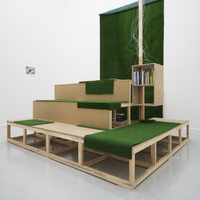
can altay
Can Altay is an artist and Professor at the Faculty of Architecture at Istanbul Bilgi University.
Working across public spaces and art institutions, his ‘settings’ provide critical reflection on urban phenomena and artistic activity. Through ‘narrative devices’ and ‘spatial instruments’ the work brings together sculpture, photography, display, design products and people. Altay’s work is often staged and manifested through the spaces, exhibitions and publications he co-produces.
His public projects include: MÇPS (Istanbul, 2017); “Loughborough Records Present Presence” (Loughborough, 2016); "Inner Space Station" (New York, 2013); "Distributed" (London, 2012); “The Church Street Partners’ Gazette” (London, 2010-13) and "PARK: bir ihtimal" (Istanbul, 2010).
As an artist, his work has been included in Biennials of Istanbul, Havana, Busan, Gwangju, Marrakech, Thessaloniki, Taipei. Exhibitions in museums and galleries include Walker Art Center (Minneapolis), ZKM (Karlsruhe), Artists Space (New York), and SALT (Istanbul). Altay’s works are included in public collections such as VanAbbe Museum (Eindhoven), ARTER-VKV (Istanbul).
Between 2012-2019 Altay was the Head of Department of Industrial Design at Istanbul Bilgi University, where he established a critical curriculum based on his experiences in contemporary art, architecture and the urban context. Resulting in a body of student work that challenges the norm especially with regards to contingencies of locatedness and production methods in design education. Together with students and graduates he co-authored publications on topics such as anonymous design, queering objects, and hybrid technologies.
He was a co-curator of the “Refuge” exhibition at the 4th Rotterdam Architectural Biennale with Philipp Misselwitz. He has been involved in exhibition making practices in both curatorial and design aspects. Together with Future Anecdotes Istanbul, they designed the permanent collection display for Van Abbemuseum and the user-spaces and workshops that accompany the exhibition. Future Anecdotes’ design collaborations on exhibition-making and display include SALT, Istanbul; CCSP Sao Paolo; The New Tretyakov Gallery, Moscow; and the upcoming Istanbul Design Biennial.
Twice a Keynote Speaker at Architectural Humanities Research Association's International Conferences, Altay gave lectures and led workshops at Princeton University, Bard College, AA School of Architecture, UCL Bartlett School of Architecture, Konstfack, Glasgow School of Art, NABA Milano, Dutch Art Institute, ETH Zurich, among other international institutions and schools.
Altay is the editor of Ahali: a journal for setting a setting, since 2007. An anthology has been published by Bedford Press in 2013. Occasionally interviewing thinkers and doers of common interest including Dan Graham, David Harvey, Jan Boelen, Justin McGuirk for various publications; his own work and writing has been published in periodicals such as Frieze, AD (Architectural Design), Design and Culture, domus, Digital Creativity and Journal of Architectural Education.
He runs and hosts the podcast “Ahali Conversations with Can Altay” reflecting on the future of cultural production. The podcast was awarded a Graham Foundation grant, bringing together voices of artists, designers, curators, architects and authors from around the world.
Altay holds a PhD in Art, Design and Architecture from Bilkent University, Ankara. He studied Interior Architecture and Environmental Design at Bilkent University; and Critical Studies at the Malmo Art Academy and Lund University.
Working across public spaces and art institutions, his ‘settings’ provide critical reflection on urban phenomena and artistic activity. Through ‘narrative devices’ and ‘spatial instruments’ the work brings together sculpture, photography, display, design products and people. Altay’s work is often staged and manifested through the spaces, exhibitions and publications he co-produces.
His public projects include: MÇPS (Istanbul, 2017); “Loughborough Records Present Presence” (Loughborough, 2016); "Inner Space Station" (New York, 2013); "Distributed" (London, 2012); “The Church Street Partners’ Gazette” (London, 2010-13) and "PARK: bir ihtimal" (Istanbul, 2010).
As an artist, his work has been included in Biennials of Istanbul, Havana, Busan, Gwangju, Marrakech, Thessaloniki, Taipei. Exhibitions in museums and galleries include Walker Art Center (Minneapolis), ZKM (Karlsruhe), Artists Space (New York), and SALT (Istanbul). Altay’s works are included in public collections such as VanAbbe Museum (Eindhoven), ARTER-VKV (Istanbul).
Between 2012-2019 Altay was the Head of Department of Industrial Design at Istanbul Bilgi University, where he established a critical curriculum based on his experiences in contemporary art, architecture and the urban context. Resulting in a body of student work that challenges the norm especially with regards to contingencies of locatedness and production methods in design education. Together with students and graduates he co-authored publications on topics such as anonymous design, queering objects, and hybrid technologies.
He was a co-curator of the “Refuge” exhibition at the 4th Rotterdam Architectural Biennale with Philipp Misselwitz. He has been involved in exhibition making practices in both curatorial and design aspects. Together with Future Anecdotes Istanbul, they designed the permanent collection display for Van Abbemuseum and the user-spaces and workshops that accompany the exhibition. Future Anecdotes’ design collaborations on exhibition-making and display include SALT, Istanbul; CCSP Sao Paolo; The New Tretyakov Gallery, Moscow; and the upcoming Istanbul Design Biennial.
Twice a Keynote Speaker at Architectural Humanities Research Association's International Conferences, Altay gave lectures and led workshops at Princeton University, Bard College, AA School of Architecture, UCL Bartlett School of Architecture, Konstfack, Glasgow School of Art, NABA Milano, Dutch Art Institute, ETH Zurich, among other international institutions and schools.
Altay is the editor of Ahali: a journal for setting a setting, since 2007. An anthology has been published by Bedford Press in 2013. Occasionally interviewing thinkers and doers of common interest including Dan Graham, David Harvey, Jan Boelen, Justin McGuirk for various publications; his own work and writing has been published in periodicals such as Frieze, AD (Architectural Design), Design and Culture, domus, Digital Creativity and Journal of Architectural Education.
He runs and hosts the podcast “Ahali Conversations with Can Altay” reflecting on the future of cultural production. The podcast was awarded a Graham Foundation grant, bringing together voices of artists, designers, curators, architects and authors from around the world.
Altay holds a PhD in Art, Design and Architecture from Bilkent University, Ankara. He studied Interior Architecture and Environmental Design at Bilkent University; and Critical Studies at the Malmo Art Academy and Lund University.
less
Related Authors
Paolo Parisi
ACCADEMIA DI BELLE ARTI DI FIRENZE
Irina Chmyreva
The russian Academy of arts
Nicolae Sfetcu
The Romanian Academy
Boryana Rossa (Dragoeva)
Syracuse University
ТОМАS GLANC
University of Zurich, Switzerland
Åsne Høgetveit
UiT The Arctic University of Norway
Jillian Porter
University of Colorado, Boulder
InterestsView All (33)
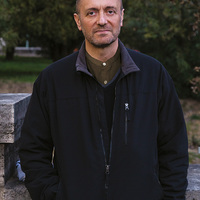
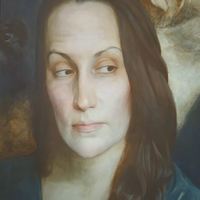


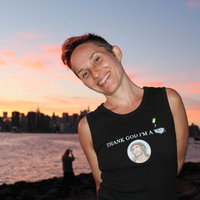

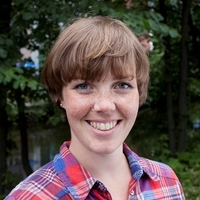
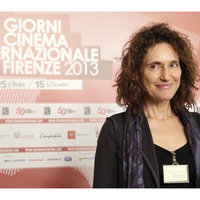
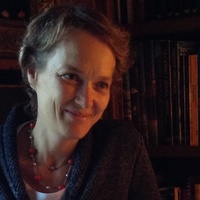

Uploads
Papers by can altay
was after agreeing to work together on an exhibition that would rework,
reconfigure and reflect on two previous exhibitions at the Centro Pecci
around Soviet and Post-Soviet realities, with the addition of a third
chapter (or rather a first chapter) stitching today’s artistic positions
towards the imagined futures from the past that I got a text message from
Marco Scotini. He had sent me this film still from Tarkovksy’s Solaris
(1972), a scene from the space station, the empty, white, and round space
with circular windows.
products into the discourse of design, and thus to position the sample of sixty-seven objects, out of the many we examined, as design products. Through this inventory, we discuss how to position and make visible these site-specific design/production practices and the culture from which such situated products emerge.
yöntemlerin olasılıkları tartışılmaktadır. İstanbul kent içi küçük üretim bölgeleri, malzeme ve üretim tekniklerinin anlaşılması ve pratik edilmesi için önemli fırsatlar sunmaktadır. Bugüne kadar tasarım lisans eğitiminde sanayi ile olan ortak çalışmalar öncelikli olmuş ve bu tür kent
içi küçük üretim bölgelerinin, zanaat atölyelerinin eğitime katkısı yeterince ve etkin bir şekilde değerlendirilmemiştir. Bu model ile kentteki zanaat atölyelerinin ve sahip oldukları yerel malzeme, üretim tekniklerinin daha aktif bir şekilde tasarım eğitimine eklemlenmesine çalışılarak stüdyo dersi kampüsten kente, zanaat atölyelerine taşınmıştır. Böylece ikinci sınıf tasarım öğrencileri hem çırak olarak zanaat atölyelerinde aktif üretime katılmakta, yaparken öğrenmekte hem de süreçleri içeriden deneyimleme şansı elde ederek geniş bir zaman diliminde gözlem yapabilmektedirler.
Bu modelde ardışık tasarım ve üretim süreçleri yerine ikisinin birlikte olduğu, etkileşimli bir tasarım, üretim ve eğitim süreci gerçekleştirilmekte; malzeme, üretim teknikleri, zanaatkarın bilgisi ve atölye ortamı tasarıma doğrudan girdi oluşturmakta; yaparken düşünme ve tasarlama devreye sokulmaktadır. Stüdyo süresince öğrenciler Şişhane ve Galata bölgesindeki zanaat ağında yer alan metal, ahşap, abajur, avize, tel, pantograf, akrilik, saz atölyeleri
gibi farklı malzeme ve üretim tekniklerinde uzmanlaşmış atölyelerle eşleştirildi. Öğrenciler ikili gruplar halinde seçtikleri atölyelerde ustaların yanında çırak olarak çalıştı ve üretim sürecinin bir parçası oldular. Böylelikle malzeme ve üretim tekniklerini sürecin içerisinden anlama, araştırma ve deneme şansına sahip oldular; bir yandan da işbirliği yaptıkları aktörleri tanırken toplumsal ve kentsel kesitte yeni deneyimler ve farkındalık kazandılar. İstanbul Bilgi Üniversitesi, Endüstri Ürünleri Tasarımı Bölümü’nün tasarım eğitiminde izlediği çoğulcu bakış açısıyla uygulamaya giren ve sahada çalışmalar yapmakta olan Made in Şişhane projesi ile işbirliğinde önerilen bu model, alandaki deneyimler, öğretim kadrosunun katkısı, öğrenciler ve atölyelerden gelen geri bildirimlerle geliştirilmeye, yapılandırılmaya devam etmektedir.
Anahtar Kelimeler: Tasarım Eğitimi, zanaat, atölye, ustalık, çıraklık, malzeme, kentiçi üretim, okuldışı eğitim, İstanbul, Şişhane, Galata
was after agreeing to work together on an exhibition that would rework,
reconfigure and reflect on two previous exhibitions at the Centro Pecci
around Soviet and Post-Soviet realities, with the addition of a third
chapter (or rather a first chapter) stitching today’s artistic positions
towards the imagined futures from the past that I got a text message from
Marco Scotini. He had sent me this film still from Tarkovksy’s Solaris
(1972), a scene from the space station, the empty, white, and round space
with circular windows.
products into the discourse of design, and thus to position the sample of sixty-seven objects, out of the many we examined, as design products. Through this inventory, we discuss how to position and make visible these site-specific design/production practices and the culture from which such situated products emerge.
yöntemlerin olasılıkları tartışılmaktadır. İstanbul kent içi küçük üretim bölgeleri, malzeme ve üretim tekniklerinin anlaşılması ve pratik edilmesi için önemli fırsatlar sunmaktadır. Bugüne kadar tasarım lisans eğitiminde sanayi ile olan ortak çalışmalar öncelikli olmuş ve bu tür kent
içi küçük üretim bölgelerinin, zanaat atölyelerinin eğitime katkısı yeterince ve etkin bir şekilde değerlendirilmemiştir. Bu model ile kentteki zanaat atölyelerinin ve sahip oldukları yerel malzeme, üretim tekniklerinin daha aktif bir şekilde tasarım eğitimine eklemlenmesine çalışılarak stüdyo dersi kampüsten kente, zanaat atölyelerine taşınmıştır. Böylece ikinci sınıf tasarım öğrencileri hem çırak olarak zanaat atölyelerinde aktif üretime katılmakta, yaparken öğrenmekte hem de süreçleri içeriden deneyimleme şansı elde ederek geniş bir zaman diliminde gözlem yapabilmektedirler.
Bu modelde ardışık tasarım ve üretim süreçleri yerine ikisinin birlikte olduğu, etkileşimli bir tasarım, üretim ve eğitim süreci gerçekleştirilmekte; malzeme, üretim teknikleri, zanaatkarın bilgisi ve atölye ortamı tasarıma doğrudan girdi oluşturmakta; yaparken düşünme ve tasarlama devreye sokulmaktadır. Stüdyo süresince öğrenciler Şişhane ve Galata bölgesindeki zanaat ağında yer alan metal, ahşap, abajur, avize, tel, pantograf, akrilik, saz atölyeleri
gibi farklı malzeme ve üretim tekniklerinde uzmanlaşmış atölyelerle eşleştirildi. Öğrenciler ikili gruplar halinde seçtikleri atölyelerde ustaların yanında çırak olarak çalıştı ve üretim sürecinin bir parçası oldular. Böylelikle malzeme ve üretim tekniklerini sürecin içerisinden anlama, araştırma ve deneme şansına sahip oldular; bir yandan da işbirliği yaptıkları aktörleri tanırken toplumsal ve kentsel kesitte yeni deneyimler ve farkındalık kazandılar. İstanbul Bilgi Üniversitesi, Endüstri Ürünleri Tasarımı Bölümü’nün tasarım eğitiminde izlediği çoğulcu bakış açısıyla uygulamaya giren ve sahada çalışmalar yapmakta olan Made in Şişhane projesi ile işbirliğinde önerilen bu model, alandaki deneyimler, öğretim kadrosunun katkısı, öğrenciler ve atölyelerden gelen geri bildirimlerle geliştirilmeye, yapılandırılmaya devam etmektedir.
Anahtar Kelimeler: Tasarım Eğitimi, zanaat, atölye, ustalık, çıraklık, malzeme, kentiçi üretim, okuldışı eğitim, İstanbul, Şişhane, Galata
The book is composed of three chapters: C-Fact: community, collectivity, contingency, constituency; Modelmaking: On Propositions and Implementation; and Forecasting Broken Pasts.
With contributions by Agency, Bik Van der Pol, Celine Condorelli, Chris Evans, Luca Frei, Mike Nelson, Nils Norman, Paul O’Neill and others.
-
Türkiye’de 1990’ların sonundan itibaren “kamusal mekânda sanat” üzerine katmanlanan tartışma ve deneyimler dış mekânda sanat pratiklerini yaygınlaştırdı. Avrupa Birliği müzakerelerinin getirdiği destek yapıları, iş birlikleri ve paralelinde oluşan sosyal, politik ve ekonomik ortamla İstanbul, 2000’lerin ikinci yarısında dünyanın gözde kentlerinden birine dönüştü. 2009 ile 2011 yılları arasında, British Council’ın yerel partnerlerle yürüttüğü My City [Benim Kentim] ile Kültürel Aracılar gibi fon destekli kapsamlı projeler yapıldı. SALT’ın yayıma hazırladığı PARK: bir ihtimal [Hatırlama] e-yayını, yine bu dönemde gerçekleştirilen aynı adlı dış mekân sergisini yeniden yorumlamaya açıyor.
“Parkların ne olduğu ve ne olabileceği üzerine farklı sanatçıların yapıtlarını bir araya getiren bu sergi, gündelik hayatımızda içinden geçip gittiğimiz mekânların barındırdıkları öyküler ve potansiyellerle ilgileniyor. Parktan şehre, oradan da içindeyken kanıksadığımız düzenlere başka açılardan bakmaya davet ediyor. Bu mekânları kullanış biçimlerimizi, bu düzenlerde barınma biçimlerimizi değiştirirsek neler olabilir sorusunu soruyor. Bu soruyla kenti ve ‘kamusal’ alanı ve tabii kendimizi tekrar tekrar yeniden şekillendirebilmek mümkün. PARK: bir ihtimal bir yandan da sınırlı kaynaklarla, kendine yetecek düzeneklerin nasıl çalışabileceklerine dair tezler üretiyor.”
Yayıma hazırlayan: Can Altay ile Vasıf Kortun ve Merve Elveren (SALT Araştırma ve Programlar)
Altay’s one-person exhibition 'Split Horizon (Domestic Disobedience) that took place from September 1st until October 17th, 2015 involves works that bring together some of the main subjects discussed in his earlier works, carrying them a step further with new experiments. The main threads and visual vocabulary of his work culminate in this exhibition. However, the sense of optimism and celebration inherent to his earlier works are replaced by a solemn attitude through domestic objects, urban spaces and other means of observation. Although he continues to embrace local peculiarities as objects of knowledge connected with people, the city and modernism, he adapts a more anxious, more provocative and direct tone. And, the audience is welcome to follow.
This course is about the responsibilities of the designer. By contextualizing design-work we attempt to position the designer and her fields of responsibility.
Despite the fact that there are many overlaps and intersections among the contexts we will be discussing, a certain categorization was necessary. Production, materiality, labour, consumption, taste, society, politics, global justice, gender, usership, environment (resources and impacts), and ethics will be some of the contexts to be explored. Through key texts by authors such as Marx, Morris, Giedion, Bourdieu, Bonsiepe, Papanek, Hebdige, Latour and Lazzarato accompanied by current research and debates on design practice and design products; the course will be a cross-section of the profession and its impacts, as dissected by critical theory.
This course deals with the questions of “Artistic Position”, and making art in and for the “open”, namely the public sphere and urban spaces. These notions will be discussed and elaborated with focus on their impact on Fine Art Practice, and as direct input to the individual practices of students.
The course is structured in three clusters, each ending with submissions which form a sequence that lead to the final individual projects. These clusters are: (a) Defining and Contextualizing Practice in relation to artists’ positions; (b) Understanding the public realm as a participatory field and artists’ ways of contributing to it; and a close look into (c)Urbanity, as the site of contemporary life and art, leading to the development of a project for Urban Public Space.
01/07/2017 - 03/01/2021
collection Van Abbemuseum
Curators: Christiane Berndes, Charles Esche, Steven ten Thije
Between 2017 and 2021 the Van Abbemuseum organises a series of exhibitions and projects using its own collection. In this context the exhibition The Way Beyond Art can be seen in the large hall circuit of the Collection Building from 1 July 2017. It includes post World War II works by, amongst others, Chto Delat, Corneille, Dan Flavin, Nilbar Güres, Iris Kensmil, Anselm Kiefer, John Körmeling, Taus Makhacheva, Füsun Onur, Dan Peterman, Thomas Schütte and Franz Erhard Walther.
On the basis of three fundamental topics – Land, Home and Work – works are grouped and activated in a new sequence of ‘atmosphere rooms’ for the present. The traditional model of the white cube is rejected in this special setting by Can and Asli Altay, where extended possibilities for experiencing art in space and in relation to body and mind are tested.
ART AS AN ENGINE FOR CHANGE
The works of art in the exhibition raise questions which are recognisable and important for everyone. What sort of country or society do we want to live in? What role do freedom, identity and sustainability play in our ideas about the future? In the exhibition we examine how we can use the museum and the artworks to discuss these questions with each other. The experimental design of the exhibition breaks through the traditional model of the white cube and opens up new possibilities for experiencing art in a playful way.
The title The Way Beyond Art is taken from a book published in 1947 by Alexander Dorner, the director of the museum in Hannover in the 1930s. In that book he describes how the overwhelming changes in the world are not only expressed in art and science, but actually form the basis for them. For Dorner, art is not a mirror that reflects, but an engine that encourages change.
By extension, this collection exhibition is a way of understanding and changing the world. We chose the themes Land, Home and Work because they are at the heart of our everyday lives and are important for all of us, all over the world.
DYNAMICS OF THE EXHIBITION
We will regularly introduce changes in the exhibition, together with visitors and groups who add an edge to the theme that is exhibited from their own perspective.
DESIGN OF THE EXHIBITION
Can & Asli Altay (Future Anecdotes Istanbul).
Altı yıldır İstanbul Bilgi Üniversitesi Endüstri Ürünleri Tasarımı Bölüm Başkanlığını üstlenen Can Altay, ürün tasarımında düşünce ve icraata yönelik açılımlara ve sınır-aşımlarına odaklandığı konuşmasında, Üretici-Tasarımcı-Kullanıcı-Nesne arasındaki ilişkilerin yeniden yorumlandığı örnek işler ve projeler üzerinden tasarımda ve kullanımda nesnelerinin ‘remix’lenmesini inceliyor.
Transgression formed the theme of the 10th international conference of the Architectural Humanities Research Association (AHRA) 21-23 November 2013.
This panel seeks to address the spatial imagination over the Virgolo, by scrutinizing the current models and proposals (both the neo-liberal policies and imaginaries over such pieces of land as 'to be developed'; and its counter-hegemony of a more preservative tone). While choosing to avoid these two positions, the panel will search for possibilites that do not by-pass this conflict over spatial imagination and foresight, but rather look for ways in which the city can allow its inhabitation otherwise, in face of the current constipation over urban future.
Particularities of the Virgolo, its relationship to infrastructural development (tunnels) and the range of spaces and activities that surround it will be given special notice in the search for further possibilities. The speakers Stefano Novello (Architect, Bolzano), Michael Obrist/Feld72 (Architect, Vienna) und Huib Haye van der Werf (Head of Artistic Program Multiform Institute for Fine Art, Design and Reflection, Maastricht) will shortly present different viewpoints and imaginaries over the Virgolo before the panel will be opened to the audience in a discussion moderated by Can Altay and the curatorial-team.
developing space and situations. Based on the idea of “Setting
a setting” the Istanbul based artist Can Altay will present
and discuss around different examples developed in various
contexts, from the art space exhibitions and projects to
social and urban interventions.
What are appropriate modes of behavior for both artists and museums? What are the ethical, critical, and practical questions practitioners are asking today? What methodologies, sensibilities, and artistic practices are changing the work of museums? This symposium considers these questions in the context of artistic innovation and critical inquiry, encouraging artists to discuss their work as it relates to museums as well as the world beyond gallery walls.
Share your ideas, thoughts, and photos before, during, and after the conference on Twitter and Instagram using: #OutThere2014.
Participants include: Tom Finkelpearl, director of the Queens Art Museum and author of What We Made: Conversations on Art and Social Cooperation; Ernesto Pujol, performance artist, social choreographer, and educator; Vasif Kortun, curator, writer, teacher, and director of research and programs at SALT Istanbul; Design 99 founders Gina Reichert and Mitch Cope, who investigate new models of contemporary art and architectural practice in Detroit; Wael Shawky, artist and founder of MASS Alexandria, the first independent studio study program for young artists in Egypt; Sally Tallant, executive director of the Liverpool Biennial, the UK Biennial of International Contemporary Art, and former head of programs at the Serpentine Gallery, London; Ivy Wilson, associate professor of english and director of American studies at Northwestern University; Rick Lowe, artist and founder of Project Row Houses (PRH), a nonprofit arts organization; Emmanuel Pratt, photographer, urban designer, and farmer, as well as director of Sweet Water Foundation in Chicago and professor of urban development; Can Altay, architect, artist, designer, and scholar living in Istanbul; and Lisa Yun Lee, director of the School of Art and Art History at the University of Illinois at Chicago.
Convened by Heidi Reitmaier, Beatrice C. Mayer Director of Education, MCA Chicago, Out There is one of a series of ongoing public discussions hosted by the MCA each year to explore the role and identity of museums in the twenty-first century.
DAN GRAHAM WAS IN ISTANBUL FOR HIS FIRST SOLO EXHIBITION AT PROTOCINEMA. THEY MET WITH CAN ALTAY IN A CROWDED BACKYARD CAFE IN CIHANGIR, TO TALK ABOUT CORPORATE URBANISM, VOYEURISM, LANDSCAPE TRADITIONS, THE “JUST-PAST” AS A HISTORICAL CATEGORY, QUESTIONS OF HUMAN SCALE, THE DUAL-FACETED ACT OF MODELMAKING, THE OVERLAYING OF FUNCTION AND MEANING, AND HOW NECESSARY IT IS TO BE INSIDE GRAHAM’S WORK, RATHER THAN BEING FROM THE OUTSIDE LOOKING IN. ISTANBUL WAS NOT ONLY THE BACKDROP FOR THIS ENCOUNTER; IT WAS MORE OF A FRAME-SPACE –NOT UNLIKE GRAHAM’S PAVILLIONS– THAT SHAPED THE DISCUSSION.